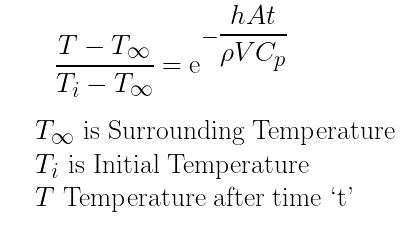Ansys Learning Forum › Forums › Discuss Simulation › Fluids › For analysis of flow over cylinder or sphere in 2D- How does ANSYS knows it’s sphere or cylinder. › Reply To: For analysis of flow over cylinder or sphere in 2D- How does ANSYS knows it’s sphere or cylinder.
October 29, 2021 at 1:41 pm
Subscriber
 Let me explain what I did with a 2D circle for Lumped Heat Analysis. I created a circle (assuming the cross-section of the sphere will be a circle). This circle I assumed as made of silver. So from the Biot formula (Bi = 0.05- assumed), I found the value of heat transfer coefficient (h)- in this case, many web resources used R as characteristic length (Lc) but according to the conventional formula, it should be Volume/Surface Area. Question 1: Why Lc has been chosen as R instead of R/3.
Let me explain what I did with a 2D circle for Lumped Heat Analysis. I created a circle (assuming the cross-section of the sphere will be a circle). This circle I assumed as made of silver. So from the Biot formula (Bi = 0.05- assumed), I found the value of heat transfer coefficient (h)- in this case, many web resources used R as characteristic length (Lc) but according to the conventional formula, it should be Volume/Surface Area. Question 1: Why Lc has been chosen as R instead of R/3. After meshing and named selections, in fluent I set the outer wall as constant temperature with convective heat transfer coefficient as obtained from Biot formula and solved the system. Question 2: I found that the obtained value from ANSYS doesn't match with either case of cylinder or sphere analytical formula (attached image). But once I did a 3D analysis of the sphere, I got the correct answer- matching with analytical results.
So, Doubt came to my mind: how will ANSYS determine sphere and cylinder in 2D. But you answered it and I am satisfied- I will try and let you know the results.
If I need to simulate for flow analysis (assuming the whole circle- considering as sphere- since at Re = 200 or so, we get vortices so I assume it better to go with full circle), but based on my past experience I found that coefficient of lift and drag doesn't match with lift force and drag force- as they are linked by analytical formula. Question 3: Will I get an answer if I calculate the lift and drag coefficient from the lift and drag forces, because I know it must be sphere- so the surface area constricts the flow. Is this a good alternative?


